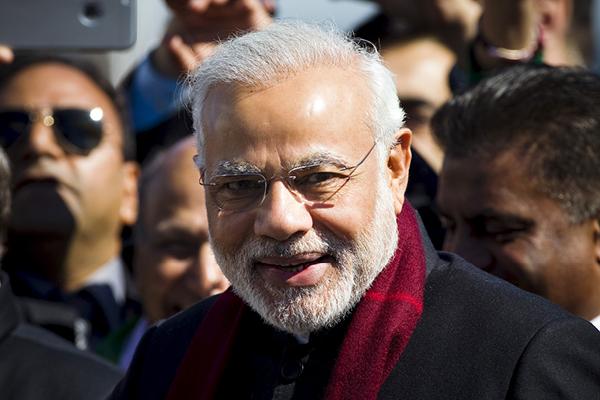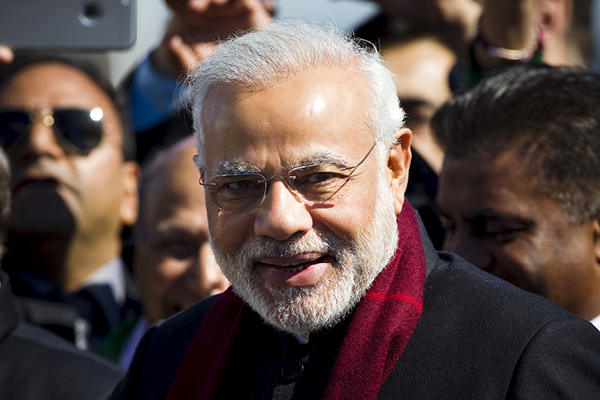
India recently announced sweeping reforms to rules on foreign direct investment, announcing easier terms for investors in sectors ranging from civil aviation to pharmaceuticals. However, it still has some way to go before it provides a truly investor-friendly business environment, says Raghavendra Verma
Skip to
India’s latest round of reforms in foreign direct investment (FDI) rules, announced in June this year, is expected to accelerate the flow of investment and boost growth in the crucial sectors like defence, pharmaceutical and civil aviation.
”The government has really lived up to its expectations and the recent amendments will give a major impetus to FDI,” says Akshay Chudasama, managing partner of Shardul Amarchand Mangaldas & Co in Mumbai. Global strategic investors often need to invest a percentage of their corpuses in emerging markets and India is one of the most attractive destinations, he says.
Indeed, according to a research note released in July by Nomura, India is the “biggest turnaround story” in emerging markets with GDP growth expected to rise from 7.3 percent in 2015 to 7.8 percent in 2016.
In the previous round of FDI reforms announced in November 2015, the government had chosen 15 sectors including mining, defence, civil aviation and broadcasting.
The specific sectors for the latest round of reforms were chosen with the “objective of ‘Make in India,’ focus on creating jobs, and ensuring that India becomes a manufacturing hub,” Nirmala Sitharaman, India’s minister for commerce and industry, told journalists while announcing the revised FDI rules in June.
Prime Minister Narendra Modi’s high profile ”Make in India” campaign was launched in September 2014, and between October that year and May 2016, India received $61.58 billion in FDI, a 46 percent rise compared to the previous 20 months.
The major sectors that are currently allowed to have 100 percent FDI with conditions include agriculture, mining, food retail, airports, wholesale trading, pharmaceuticals, non-banking financial companies and petroleum exploration. The sectors that have attracted maximum FDI include services, trading, automobile and power.
Back to topDEFENCE
The production of defence goods is going to be a major attraction for future foreign investment, as over the next 10 years India plans to spend $100 billion in modernisation of its defence forces and now the government has removed the ‘state of art technology’ requirement for 100 percent FDI with prior approval.
“We are seeing a lot of interest in defence sector and a lot of structuring is going on,” says Mohit Saraf, senior partner with Luthra & Luthra Law Offices in New Delhi. “We expect billions and billions of dollars to come in here.”
These investments are expected to provide a big impetus to the whole of defence industry as according to Saraf, a large number of local ancillary units and other related factories would come up to support the new production.
Replacing imports is a major priority of the government as in the financial year ending March 2015, India spent $3.8 billion on importing defence equipment, making it the world’s largest importer of military hardware.
“India needs to end dependence on imported weaponry, which is expensive and is not of the latest technology,” Prime Minister Modi said in January. In the union budget for 2016-17, the finance ministry withdrew all tax waivers given to the import of defence equipment.
Back to topPHARMACEUTICALS
In the pharmaceuticals industry, India will now allow 74 percent FDI in existing companies without prior government approval. Higher investment will also be possible, subject to approval.
According to Saraf, private equity firms are particularly interested in investing in Indian pharmaceutical companies and the new norms suit them perfectly. “PE investment is never more than 74 percent so that they can exit the investment later,” he says
Multinational pharma companies have also been trying to buy Indian corporations, but the regulatory process usually takes very long, says Saraf. “Six months used to be wasted just at the FIPB (Foreign Investment Promotion Board),” he says.
The changes are more likely to attract Japanese investors to the pharmaceuticals, chemicals and FMCG manufacturing sectors, says Chudasama.
Back to topAVIATION
The new norms for the civil aviation sector allow 100 percent FDI in existing airport projects without the need for prior approvals.
Calling it a significant and welcome change, Chudasama says that, “some of the Indian airport operators are under stress, and the newly relaxed norms provide an ability for foreign players to come in and buy out 100 percent of those companies.”
The new norms also allow 100 percent FDI in all aviation-related projects with prior government approval, a move that would enable foreign airlines to acquire higher stakes in Indian carriers.
Saraf says that the policy reflects the government’s present focus on providing air connectivity to smaller cities in the country.
Back to topLEGAL WORK
The Indian regulatory environment has come a long way from the rigid rules of the past and the new rules are expected to substantially change the work of corporate law firms. “There was a time that the entire practice of some consultants evolved around FIPB and Reserve Bank of India approvals for foreign investment,” says Chudasama, “Today that is almost non-existent.”
According to Chudasama, the new FDI norms and resulting investments would also increase legal work in the transactional space including structuring and documentation.
Already Indian law firms have been expanding, with Luthra & Luthra adding 75 lawyers in the past one year, increasing its strength to 350. “It all means a lot of new work and lot of exciting transactions for us,” says Saraf.
The government has realised that India’s economic growth has been restricted by the huge amount of bad loans in the banks, says Saraf, and many of the big companies themselves are also overleveraged and stressed, together making investments in new projects very difficult.
FDI, on the other hand is a simple and direct way to raise equity, says Saraf. “Foreign corporations don’t borrow from India as the cost of capital in their own country is very low,” he says.
These foreign investments are expected to come mainly from United States, Japan, Germany, UK and to some extent from China, says Saraf. “A large part of the money will come through Singapore or Mauritius,” he says.
In 2015 India received $24.75 billion FDI out of which 24 percent was from Mauritius, 21 percent from Singapore and eight percent from United States.
India might have become very open for FDI, but doing business in India is still far more difficult than most countries, says Saraf. “Our clients compare India with Indonesia, Philippines and Brazil, where it is much easier to do business,” he says, “Most of them feel shocked that despite the changes they keep hearing about, they can’t see anything concrete.”
Indeed, the World Bank’s Doing Business Report 2016, ranks India 130 out of 189 countries in the ease of doing business, just four places above the previous year’s adjusted ranking of 134.
Saraf says that in next three years, the government wants India to be among the top fifty in the World Bank list but it is not going to be easy. “Structural reforms may take up to six years,” he says.”
Chudasama agrees: “It takes time for this to percolate across the system.” For example, he says “local licensing and tax compliance continues to be a challenge.”
However, while adopting the current reforms the government has withstood immense pressure and eventually marginalised the influence of bureaucrats and crony capitalists who benefited from the old system and weaker competition, says Saraf. “It is really path breaking.”
Foreign companies may find it easier to commit large investments in India as according to Saraf, the reform process is unlikely to be affected by a change of a government. “Future governments will have no choice but to continue the same policies,” he says.
Back to top
